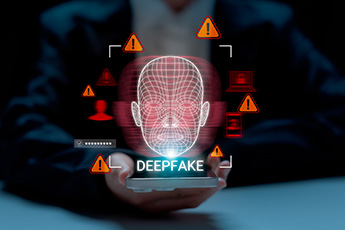Just as pop culture has long imagined tireless digital helpers — from the unblinking HAL 9000 in “2001: A Space Odyssey” to the ever-eager Data on “Star Trek: The Next Generation” — the workplace is now welcoming its own cast of virtual employees. For decades, movies and television have played with the idea of inhuman workers: robots that never sleep, androids that don’t take breaks, and AI assistants quietly running the show behind the scenes. In the 2021 movie “Free Guy”, for example, a background character wakes up to the fact that he’s an AI performing the same mundane routines until, with a twist of code, he’s given autonomy over his tasks.That sci-fi scenario is now leaping from the screen to the office. At BNY Melon, some of its newest workers are inhuman. That is to say, they are digital workers who don’t need a desk or a paycheck. They can breeze through their assigned tasks day after day without lunch breaks or vacations. Generative artificial intelligence (AI) has become an important tool for banks to assist with back-office tasks or fraud prevention. But there’s a new twist on the tech front: so-called “digital employees” or “AI employees” that are able to work autonomously in the background thanks to sophisticated AI advances. These digital employees are poised to spread rapidly through the financial sector, ultimately playing an important role at many community financial institutions (CFIs).What are AI workers?AI employees are digital versions of employees with the ability to carry out tasks on their own, typically under the supervision of human managers. In effect, they report to work each day and carry out their assigned tasks, with the ability to contact supervisors if they encounter problems. The work, at least initially, revolves around repetitive, simple tasks. These digital workers represent an evolution in the use of generative AI. Instead of just responding to requests, these employees are able to act autonomously based on their designated assignments. The benefit is that these tasks can be performed more efficiently and at less cost than by human workers. And the digital workers require very little supervision.Who’s using AI workers in banking?A growing number of leading banks are moving beyond traditional AI tools toward AI employees. These agents are taking on work once done by people, operating within defined access rights, and integrating directly into day-to-day operations. Here are some of the early movers:
- BNY Melon. According to the Wall Street Journal, BNY now has dozens of AI workers in its employ. These personas have their own company logins, and they work in two areas: coding and validating payment instructions. They can make changes if problems are encountered, although these “patches” still need supervisor approval. BNY has plans to give these AI employees their own emails so they can communicate with other bank employees, possibly through other apps like Microsoft Teams. That way, if the AI worker encounters a problem that raises an additional question, it can reach out to human colleagues for consultation.
- Goldman Sachs. The investment bank has announced its new AI-powered software engineer, Devin. Devin performs coding work for the bank’s developers and is expected to triple or quadruple the team’s output using previous AI tools. Goldman Sachs plans to add hundreds of Devins to their workforce — possibly even thousands, at some point.
What are the opportunities and risks?Efficiency and cost savings are the two big gains that AI employees can currently bring to the table. AI employees could allow a CFI to scale up certain functions without additional hires — reducing headcount for some tasks while enabling expansion with more skilled workers, such as technology specialists. They can be deployed across a range of functions, including writing code, reviewing transactions and flagging anomalies, validating documentation, performing initial credit reviews, and assisting with fraud detection. On the tasks they handle, AI workers would presumably maintain lower error rates than many human counterparts.One of the potential risks is that an organization could become over-reliant on AI workers without establishing sufficient human oversight. While AI employees are capable, they can still make mistakes in judgement, so close supervision is crucial. Financial institutions that deploy AI workers might want to treat them like any new hire: give them assignments, monitor their work, review their performance, and give them guidance. What’s next for AI workers?The next advance would be to assign digital workers more complicated tasks. Creating more complex AI employees requires more complex access points, and that is where a lot of development discussion and work is now underway. One focus is on personal assistants. Apple, for example, has discussed giving Siri the ability to access areas like a person’s emails, texts, and calendars. Hypothetically, a person could simply ask Siri when a friend’s flight would arrive, and Siri could review emails and texts from the friend to find the flight details, then check flight updates about the arrival time. In banking, there are any number of more complex tasks that AI employees could undertake if given greater access. However, the level of access is tricky, especially in a highly regulated business like banking, where privacy and the security of accounts is a top concern. Several financial institutions are currently wrestling with how much access to give these AI employees and how extensive management oversight needs to be.Exactly how much work and what kind of work AI employees will be allowed to tackle remains to be seen, but their deployment to autonomously handle routine back-office functions is already underway and is likely to expand. For CFIs beginning to explore this space, the safest approach is to start small — pilot AI employees in low‑risk, well‑defined roles, monitor results closely, and learn from early adopters’ experiences. Staying informed on industry developments and regulatory expectations will be key to scaling successfully.AI employees represent one of the most significant — and fast‑emerging — evolutions in generative AI for banking. While widespread adoption may still be a few years off for many CFIs, the potential benefits in efficiency, accuracy, and cost savings are compelling. Institutions that prepare now, with the right oversight and governance, will be best positioned to capture these advantages as the technology matures.




